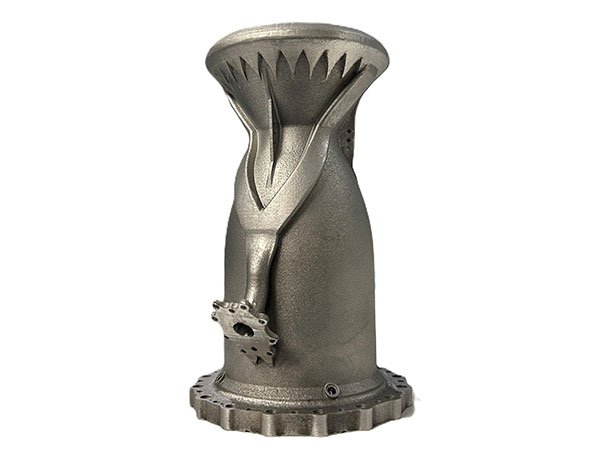ISRO and Wipro 3D Collaborate on 3D-Printed Rocket Engine
Introduction to the Collaboration
In a landmark development, the Indian Space Research Organisation (ISRO) and Wipro 3D have joined forces to advance the future of rocket engineering with 3D printing technology. This partnership signifies a significant stride in the aerospace sector, aiming to enhance the efficiency and cost-effectiveness of rocket production.
The Significance of 3D Printing in Aerospace
3D printing, also known as additive manufacturing, is revolutionizing the aerospace industry. It allows for the creation of complex components with high precision and reduced material waste. The collaboration between ISRO and Wipro 3D aims to leverage this technology to produce lighter, stronger, and more efficient rocket engines.
Goals of the ISRO-Wipro 3D Collaboration
The primary objective of this partnership is to design and develop a 3D-printed rocket engine. This initiative is expected to streamline the production process, reduce costs, and shorten the time required to manufacture rocket components. By integrating 3D printing technology, ISRO aims to enhance its capabilities in satellite launches and deep-space missions.
Advantages of 3D-Printed Rocket Engines
The use of 3D printing in rocket engine manufacturing offers several advantages. These include improved performance due to lighter engine components, increased reliability through precise manufacturing, and significant cost reductions. Additionally, the flexibility of 3D printing allows for rapid prototyping and testing, which accelerates innovation.
Potential Impact on India’s Space Missions
This collaboration is poised to have a profound impact on India’s space missions. By adopting advanced manufacturing techniques, ISRO can improve the payload capacity of its rockets and achieve higher efficiency in its operations. This technological advancement aligns with ISRO’s vision to remain at the forefront of space exploration and technology.

Why This News is Important
Enhancing India’s Aerospace Capabilities
The collaboration between ISRO and Wipro 3D marks a significant advancement in India’s aerospace capabilities. By incorporating 3D printing technology, India can enhance its competitive edge in the global space industry, making its space missions more efficient and cost-effective.
Promoting Innovation and Technological Growth
This partnership promotes innovation and technological growth within the country. It showcases India’s commitment to adopting cutting-edge technologies and fostering collaborations between leading organizations, thereby boosting the nation’s technological prowess.
Impact on Future Space Missions
The development of 3D-printed rocket engines is expected to significantly impact future space missions. With improved manufacturing processes, ISRO can achieve more ambitious goals, such as interplanetary missions and increased satellite deployment, ultimately benefiting various sectors like telecommunications and scientific research.
Economic and Strategic Benefits
The cost savings and efficiency gains from this collaboration can lead to substantial economic benefits. Additionally, it strengthens India’s strategic position in space technology, enhancing its ability to undertake complex missions and collaborate internationally.
Educational and Research Opportunities
This development opens up new opportunities for education and research in aerospace engineering and additive manufacturing. It encourages academic institutions and research bodies to explore new frontiers in these fields, contributing to the overall growth of scientific knowledge and expertise in India.
Historical Context
Evolution of 3D Printing in Aerospace
The application of 3D printing in aerospace has evolved significantly over the past decade. Initially used for prototyping, it has now become integral to the manufacturing of complex components. Aerospace giants like NASA and SpaceX have successfully utilized 3D printing to develop rocket parts, paving the way for organizations like ISRO to adopt similar technologies.
ISRO’s Legacy in Space Exploration
ISRO has a rich legacy of pioneering space missions, including the successful Mars Orbiter Mission (Mangalyaan) and the Chandrayaan missions. By continuously integrating advanced technologies, ISRO aims to maintain its status as a leading space research organization and achieve greater milestones in space exploration.
Wipro 3D’s Expertise
Wipro 3D is a leader in additive manufacturing in India, with extensive experience in providing 3D printing solutions across various industries. Its collaboration with ISRO leverages this expertise to develop innovative solutions for space applications, marking a significant step forward in the field of aerospace manufacturing.
Key Takeaways from ISRO and Wipro 3D’s Collaboration on 3D-Printed Rocket Engine
| Serial No. | Key Takeaway |
|---|---|
| 1 | ISRO and Wipro 3D are collaborating to develop a 3D-printed rocket engine. |
| 2 | 3D printing technology offers improved efficiency, reduced costs, and shorter production times for rocket components. |
| 3 | The partnership aims to enhance ISRO’s capabilities in satellite launches and deep-space missions. |
| 4 | This collaboration aligns with India’s vision to remain at the forefront of space technology and exploration. |
| 5 | The initiative promotes innovation, technological growth, and offers significant economic and strategic benefits. |
Important FAQs for Students from this News
What is the significance of the collaboration between ISRO and Wipro 3D?
- The collaboration aims to advance rocket engineering using 3D printing technology. It seeks to develop cost-effective solutions for satellite launches, which could revolutionize India’s space program.
How does 3D printing technology benefit aerospace manufacturing?
- 3D printing allows for the creation of complex components with high precision and reduced material waste. This technology also enables rapid prototyping and testing, leading to shorter production times and lower costs.
What are the goals of the ISRO-Wipro 3D collaboration?
- The primary goal is to design and develop a 3D-printed rocket engine. This initiative aims to streamline rocket production processes, reduce costs, and enhance the efficiency of satellite launches.
How does this collaboration impact India’s space missions?
- The collaboration is expected to have a significant impact on India’s space missions by enhancing the payload capacity of ISRO’s rockets and accelerating innovation in space technology. This could lead to more ambitious missions and increased satellite deployment.
What opportunities does this collaboration create for education and research?
- This collaboration creates opportunities for education and research in aerospace engineering and additive manufacturing. It encourages partnerships between academic institutions and industry, fostering innovation and technological growth in India.
Some Important Current Affairs Links
















